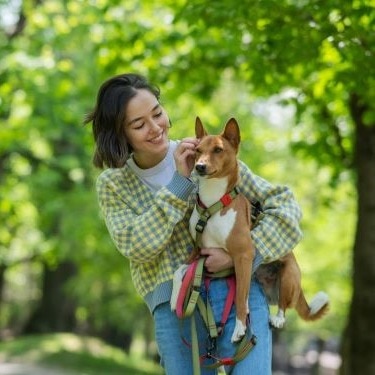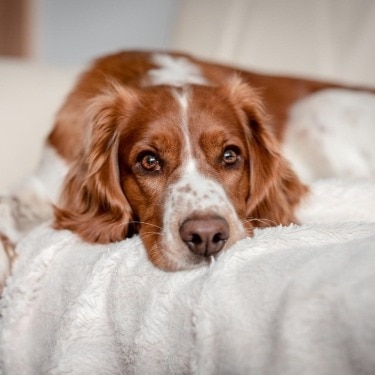
-
Find the right food for your petTake this quiz to see which food may be the best for your furry friend.Find the right food for your petTake this quiz to see which food may be the best for your furry friend.Featured products
 Adult Small Bites Chicken & Barley Recipe Dog Food
Adult Small Bites Chicken & Barley Recipe Dog FoodSupports lean muscle for dogs who prefer smaller kibble
Shop Now Adult Sensitive Stomach & Sensitive Skin Variety Pack Pouches (Chicken Stew & Turkey Stew)
Adult Sensitive Stomach & Sensitive Skin Variety Pack Pouches (Chicken Stew & Turkey Stew)Supports digestive health, nourishes skin and promotes a lustrous coat
Shop Now Adult 7+ Senior Vitality Chicken & Vegetable Stew Dog Food
Adult 7+ Senior Vitality Chicken & Vegetable Stew Dog FoodNutrition that helps a senior dog's everyday ability to get up and go
Shop NowFeatured products Adult 7+ Indoor Chicken Recipe Cat Food
Adult 7+ Indoor Chicken Recipe Cat FoodSupports energy level and beautiful fur in mature indoor cats
Shop Now Senior Vitality Adult 7+ Tuna & Vegetables Stew
Senior Vitality Adult 7+ Tuna & Vegetables StewImproves Everyday Ability to Get Up & Go
Shop Now Adult Turkey & Liver Entrée Cat Food
Adult Turkey & Liver Entrée Cat FoodPrecisely balanced nutrition with the delicious taste of minced turkey & liver to help fuel the energy needs of cats during the prime of their life
Shop Now -
Dog
- Dog Tips & Articles
-
Health Category
- Weight
- Food & Environmental Sensitivities
- Urinary
- Digestive
- Joint
- Kidney
-
Life Stage
- Puppy Nutrition
- Adult Nutrition
- Senior Nutrition
Cat- Cat Tips & Articles
-
Health Category
- Weight
- Skin & Food Sensitivities
- Urinary
- Digestive
- Kidney
-
Life Stage
- Kitten Nutrition
- Adult Nutrition
Featured articles The Science Behind Our Love for Pets
The Science Behind Our Love for PetsLearn the scientific reasons why we have such strong connections with our pets, and what science says about the love between humans and our furry friends.
Read More What Is Littermate Syndrome? Pet Adoption Guide
What Is Littermate Syndrome? Pet Adoption GuideLearn more about littermate syndrome in dogs and cats and how to successfully navigate adoption and early socialization processes.
Read More How to Properly Mix Wet & Dry Pet Foods
How to Properly Mix Wet & Dry Pet FoodsAn Orange cat eating from a bowl filled with mixed food
Read More -


Dogs need exercise to stay healthy and happy. If you have a high-energy pup who loves to run, biking with your dog could be a fun way to work out together. In fact, a whole sport, bikejoring, is dedicated to off-road cycling with your dog. Even if they're not physically fit or big enough to run alongside you, you can still carry a dog on a bike. Here's what to consider before you head out, tips for cycling success and how to prioritize your pup's safety along the way.
What to Consider Before Cycling With a Dog
Running alongside a bike is a fun, high-impact sport, but it's not for everyone. Here are a few factors to consider before hopping on your bike with a dog.

Your Dog's Health, Age and Fitness
Before starting any exercise program with your dog, consider their health, age and fitness.
Health
Running alongside a bike requires good heart and joint health. Your veterinarian can tell you if your dog is ready to go cycling, so discuss bike rides with your vet before taking the plunge.
Age
Cycling isn't a good exercise for puppies or most senior dogs. Remember that young dogs are still growing, and their skeleton and joints aren't fully developed until at least 1 year of age. For large breeds, this can take up to two years. Wait until your dog is done growing to begin cycling together. Older dogs, on the other hand, are prone to stiff joints and may benefit from controlled, low-impact exercises like walks and supervised swimming.
Fitness
Your vet can evaluate your dog's fitness and confirm whether they're in the right physical condition to join you on bike rides. Excess weight doesn't necessarily preclude your pup from participating, but you'll need to make some modifications. This may mean short, slow cycling sessions until they build stamina.
Your Dog's Breed and Size
Not all dog breeds are built for running alongside a bike.
Poor Candidates
Larger, heavier dogs such as Newfoundlands or Saint Bernards aren't good candidates, as it's hard on their joints. Brachycephalic breeds with short noses, such as boxers and bulldogs, are more likely to have breathing difficulties, so they may require gentler exercise. Consider your pup's haircoat, too. If your dog has thick fur, be extra cautious about exercising with them in warm weather.
Good Candidates
Medium and large dogs with lean bodies and long legs may be more likely to enjoy trotting alongside your bike than small dogs with short legs. Certain breeds — such as Rhodesian ridgebacks, Siberian huskies, border collies and greyhounds — are bred to run. When in doubt, ask your vet if your dog is a good candidate for cycling.
How to Carry a Dog on a Bike
If your dog has short legs or a smooshed face, don't worry: You can still take them with you! You can carry a small dog on a bike in several ways, including in a secure front basket, rear basket, pet backpack or cargo trailer. Whichever option you choose, make sure it has safety straps to secure them. Consider dog goggles and a helmet, too.
Your Cycling Skill Level
Cycling with a dog requires a certain skill level with a bike. You need to be aware of your surroundings, have excellent balance and bike-handling skills, and be able to handle a rapidly changing environment.
Your Dog's Training
Learning to bike with your dog takes some training on both of your parts. If your dog pulls on the leash or is overly excitable, train them to walk calmly on a loose leash before jumping on a bike. Teaching your dog voice commands like "stop" and "wait" is also crucial to safely enjoying this activity with your pup.
Of course, they should also be comfortable around a bike. Some dogs can be afraid of how a bike looks, sounds and moves, so let your dog adjust to being attached to a bike before cycling.
Environmental Factors
In general, avoid biking with your dog in extreme hot or cold temperatures and crowded areas, including foot and vehicle traffic. Check with your veterinarian about what temperature your dog can handle. Tolerance depends on several factors, including age and health status, so it's best to get personalized advice. Finally, take your location into account, such as whether you'll be cycling on pavement or off-road mountain biking.


Tasty Tips
Common Questions About Riding a Bike With a Dog
Is It Legal to Ride a Bike With a Dog?
Not many laws directly address riding bikes with dogs. However, it's a good idea to look into your area's local laws and regulations. Check with your local police department or government about any restrictions before you ride together to ensure you don't run into any issues along the way.
How Far Can I Bike With My Dog?
Most dogs enjoy short, easy cycling sessions on level ground. No matter your dog's age or fitness level, start slow when cycling with them. Watch your dog's disposition and body language, and end the ride if they show signs they need to rest, such as lagging behind, panting heavily, seeking shade or wanting to lie down. If your dog shows any of these signs, it's time to stop.
How Far Can a Dog Run With a Bike?
The distance your dog can run with a bike depends on their size, fitness level and overall health. Running is an aerobic exercise requiring excellent cardiovascular and musculoskeletal health. If your dog is medium to large and in excellent shape, you may be able to bike several miles. However, every dog is different. Consult your vet to determine what distance is safe and appropriate for your pup.
What to Bring When You Bike With a Dog
A successful biking adventure includes having the right equipment handy. Never leave the house without:
- Collapsible water bowls and plenty of water
- Your dog's collar and identification tags
- A brightly colored harness or collar with blinking lights for high visibility
- A first-aid kit

Be Safe and Have Fun!
If your dog has lots of energy and loves to run, cycling together could be the perfect way to expend energy and spend quality time together. Even if your dog isn't up for running alongside a bike, many pups enjoy riding on a bike or in a cargo carrier. Remember to be mindful of all the considerations before you go, and have a safe and fun adventure!


Dr. Sarah Wooten graduated from UC Davis School of Veterinary Medicine in 2002. A member of the American Society of Veterinary Journalists, Dr. Wooten divides her professional time between small animal practice in Greeley, Colorado, public speaking on associate issues, leadership, and client communication, and writing. She enjoys camping with her family, skiing, SCUBA, and participating in triathlons.
Related products

Chicken & Rice Stew with great taste and precisely balanced nutrition to support 5 essential building blocks for lifelong health

Supports digestive health, nourishes skin and promotes a lustrous coat

Nutrition that helps a senior dog's everyday ability to get up and go

Supports lean muscle for dogs who prefer smaller kibble
Related articles

Discover how the field of dog science is giving us more and more insights into the inner workings of our furry best friends.

Wondering where can I buy a dog? Consider adoption and explore the pros and cons of adopting a dog from a breeder versus an animal shelter.

Learn how to help keep your dog's immune system in tip-top shape, including nutritional immune system support for dogs and other strategies.

Can puppies have treats? Explore best practices for giving your puppy treats to ensure you're doing so in the healthiest way possible.

Put your dog on a diet without them knowing
Our low calorie formula helps you control your dog's weight. It's packed with high-quality protein for building lean muscles, and made with purposeful ingredients for a flavorful, nutritious meal. Clinically proven antioxidants, Vitamin C+E, help promote a healthy immune system.
Put your dog on a diet without them knowing
Our low calorie formula helps you control your dog's weight. It's packed with high-quality protein for building lean muscles, and made with purposeful ingredients for a flavorful, nutritious meal. Clinically proven antioxidants, Vitamin C+E, help promote a healthy immune system.


